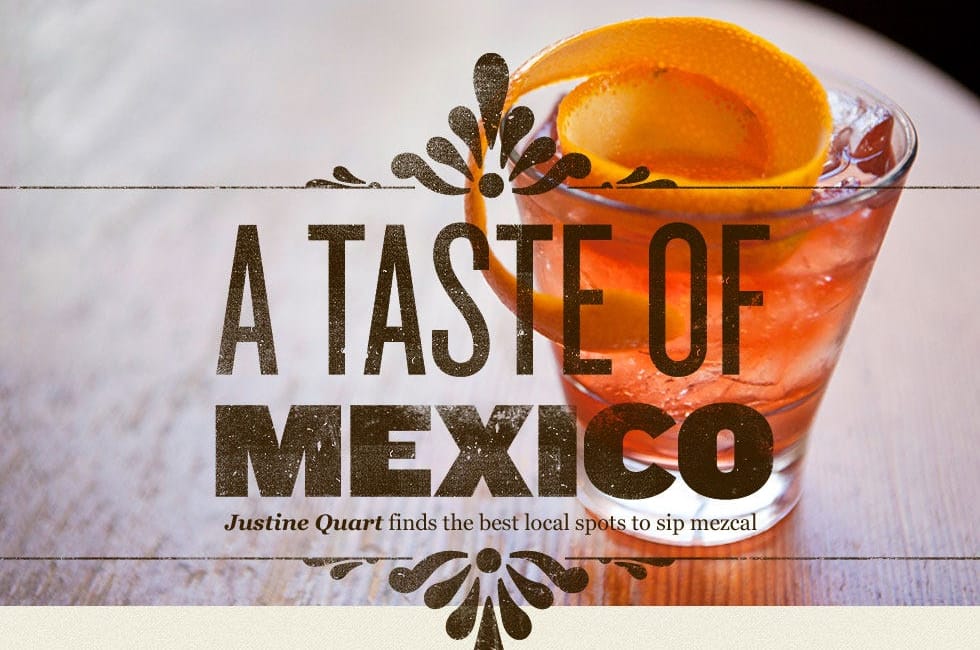
In the family of hard liquor, mezcal is the misunderstood and slightly inebriated grandfather to tequila. For decades, it has suffered an undeserved reputation for inducing spring-break judgment lapses, doubling as rocket fuel, and even containing mythical hallucinogenic properties.
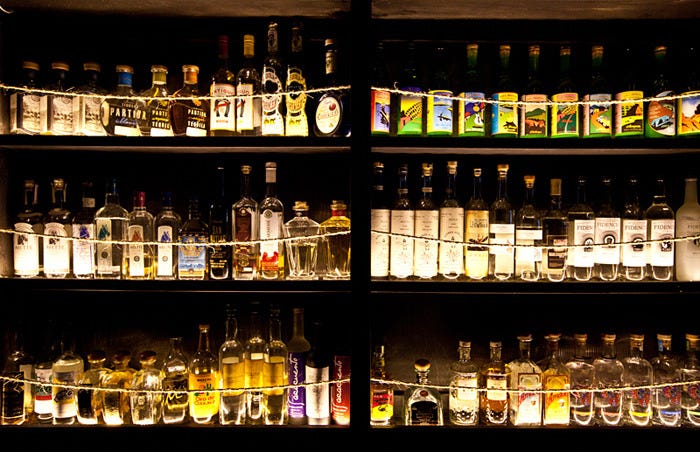
There is a growing interest in the mysterious elixir within the San Francisco craft beverage industry. But mezcal’s local popularity is still in its infancy, and bartenders are working hard to introduce the smoky spirit as a bold alternative to tequila, scotch, or whiskey.
I once had a close run-in with the libation in the mountains of Mexico, but was too frightened to take a swig from an unmarked bottle. Since those early days of timidity, my taste buds have developed a penchant for adventurous flavors. I am determined to find the best mezcalerias in San Francisco to give the liquor a second shot.

On this expedition, I’ve enlisted the help of Susan Coss who not only writes about the artisanal spirit as part of Mezcalistas, but also travels to Oaxaca (the mecca of mezcal) several times a year to visit producers. She promises that with her savvy guidance, I will attain a better appreciation for the liquor.
We take a seat at the long wooden bar in Tres, just a few blocks from AT&T Park. While the darling of the establishment is undoubtedly the tequila list, mezcal is creeping into the lineup. Susan explains that the two spirits have different distillation and agave-selection processes that strongly impact the flavor of each. Our Guerrero-born bartender gladly assembles choices on the bar for us to try.
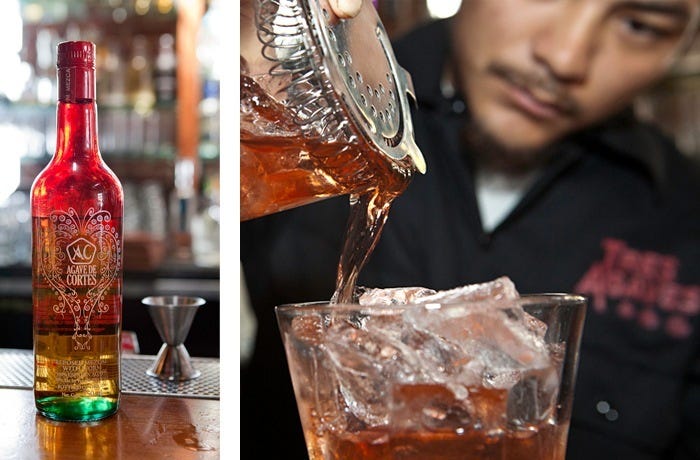
For many, mezcal evokes the image of a worm floating in a bottle of Mexican moonshine. But thankfully, there are no insect larvae to be found. “That’s a gimmick,” Susan explains. If you’ve traveled to Latin America, you’ve seen the bottles of liquor containing scorpions, snakes, insects, and an array of other oddities that belong in Paxton Gate. Same idea. “It doesn’t actually do anything for the flavor,” she explains, “but it’s a clever way to get tourists to buy crappy liquor.”

Our mezcal flight is served in five traditional terra-cotta copitas and accompanied by orange slices with a spicy chili salt mix. Before taking my first taste, Susan warns me not to simply knock back the cup, but to let the liquor roll around in my mouth. “Mezcal is made to be sipped,” she instructs, and the bartender nods in agreement.
Each of the mezcal varieties possesses an earthiness that more closely resembles scotch than the smooth burn of tequila. Warm overtones of citrus, spice, pine, and even a slightly floral sweetness wash over my palate, and I am suitably impressed.
Of our selections, the Fidencio Madrecuixe is the obvious standout with a hint of mineral and a touch of grassiness. “Mezcal is terroir-driven, just like wine,” Susan says. This variety is made from wild agave plants foraged in the mountains and roasted five days in the ground with black oak. It is a popular choice among mezcal connoisseurs, and I take the last sip, feeling inducted into the club.
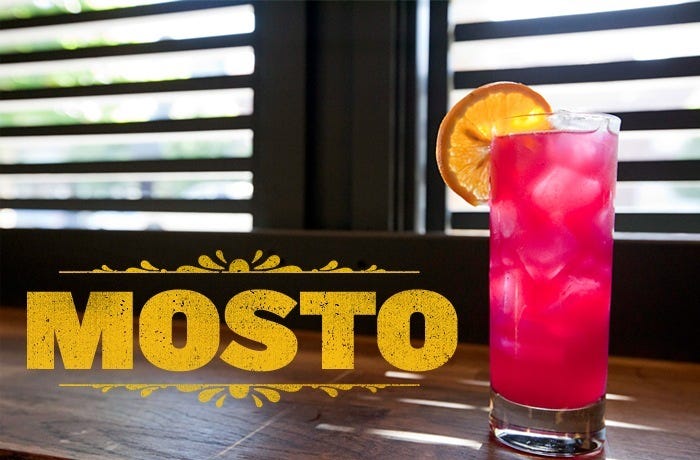
The dimly lit Mosto bar is completely packed on a Thursday night with Eric Giardina slinging agave spirits and pouring vicious tequila-based cocktails behind the bar. When he finds out we want mezcal, he grins broadly.
Eric not only organizes monthly mezcal tastings at Mosto in the Mission, but also takes bartenders on trips to visit artisan producers south of the border. Despite mezcal’s growing popularity in the liquor and cocktail scene, much of the product never even makes it to the United States due to trade restrictions and small-batch quantities.
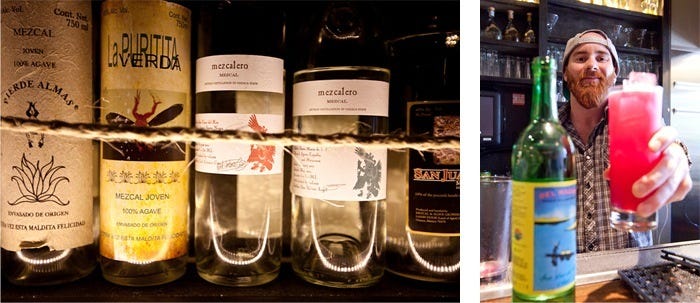
We order three different kinds from the bar’s exhaustive list. The petite glasses arrive with side shooters of spicy green jalapeño juice and roasted tomato sangrita. I reach for the Pierde Almas Pechuga, a mezcal that incorporates the steam passing over a whole turkey breast suspended in the air. I am pleasantly surprised by the clean swig devoid of poultry. The mezcal retails for around $200 a bottle, and I flinch at the little shot’s price tag.
“Don’t do cheap mezcal,” schools Susan. “It’s usually way too smoky.” The mesquite flavor stems from the roasted hearts of the maguey plants that are fermented and distilled to produce mezcal. Blends don’t capture the complexity of flavors that single-origin varieties showcase.
“Have you seen this?” Eric asks as he takes a bottle and vigorously shakes it. The resulting bubbles signify both the alcohol content and the mezcal’s quality. Before we leave, Eric pours us all a “bartender’s choice” into small copitas, taking his own personal cup from a pocket. “Ojos ojos,” he says and we all lock eyes before swigging the libation down with a satisfying warmth.
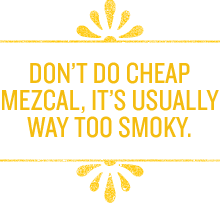
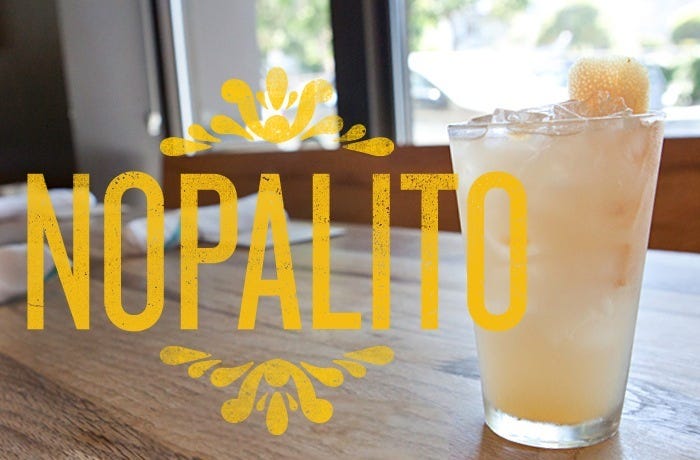
It’s a Friday night, and the rustic wood and light filled interior of Nopalito is overflowing with patrons. The folded brown paper espíritus menu includes 20 different varieties of mezcal ranging in price from $4.50–$9.00. We start with a Minero and San Luis del Rio, both distributed by Del Maguey but very different on the flavor spectrum.

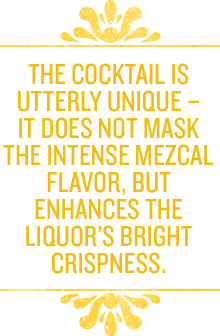
With an orange slice in hand, I ask bartender Lance Lily if the chili salt contains worms, a mark of authenticity according to Susan. He raises an eyebrow from behind thick black-rimmed glasses and brandishes a glass mason jar, carefully dropping a pinch of greenish powder onto the dish as if doting out a pile of gunpowder. “We get this gusano from Mexico,” Lance explains. I take a last bite of the gusano (a worm-larva and spice mixture) dusted orange slice and peruse the cocteles list.
Two of the house cocktail specials include mezcal, but I’m a bit apprehensive of adulterating a strongly flavored spirit with fruit. Lance assures me that the Mezcal Paloma is one of the favorite cocktails of the Nopalito staff, and I slide the tall blush-tinted and deceptively girly looking cocktail glass closer to take a sip. The Paloma mixes the tart punch of freshly squeezed grapefruit juice with a smoky rich Del Maguey Vida mezcal, a touch of agave, and a dollop of Cynar, an artichoke-based bitter.
I am immediately surprised at the combination that hits the tip of my tongue with a refreshing mesquite zing. The cocktail is utterly unique — it does not mask the intense mezcal flavor, but enhances the liquor’s bright crispness.
I thank Lance as he continues with his lime juicing prowess (a method he calls the “twin tigers”), and we promise to come back to try more.
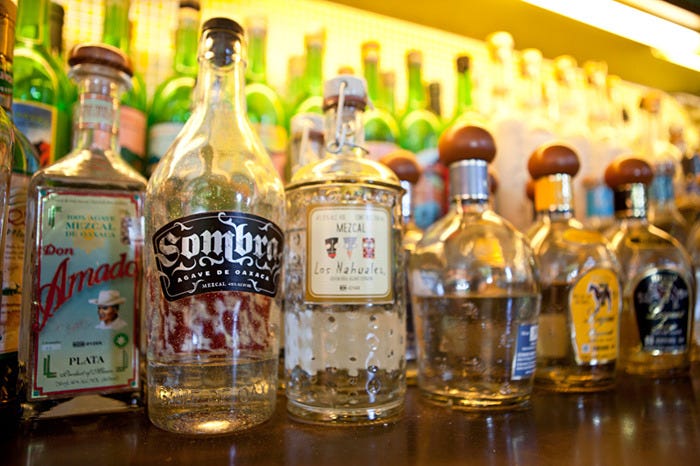
Slowly, dash by dash, mezcal is gaining a following in the San Francisco bar scene and gaining the respect of local drinkers. Just don’t let the dainty 1-ounce glass thimbles fool you — this spirit is not made for the faint of heart, or liver.

Visit Tres, Mosto, or Nopalito for some of the best selections of mezcal in the city. Dip a slice of orange in the chili salt (or with sal de gusano if you’re brave) to open and cleanse your palate between sips, but just stay away from any bottle with a worm floating inside. You can also check out Susan Coss’ blog for upcoming tasting events and mezcal-related intel.



